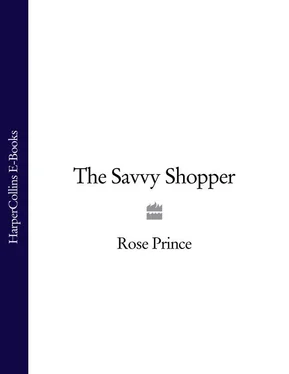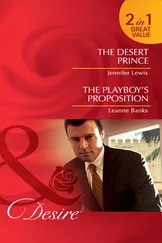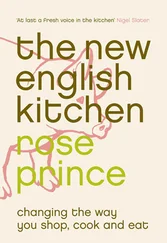Dorset Cereals, Beverill Avenue East, Poundbury,Dorchester DTI 3WETel: 01305 751000www.dorset-cereals.co.uk
Mueslis made with good-quality cereals and fruit, most of which contain no added sugar. All but one of the mueslis contain no added salt. The high-fibre muesli is recommended.
Jordans Ltd, Holme Mills, Biggleswade, Bedfordshire SGI8 9JYTel: 0800 587 8901www.jordans-cereals.co.uk
Good organic porridge oats and multigrain (non-organic) porridge oats.
Nature’s Path, Community Foods, Brent Terrace,London NW2 ILTTel: 020 8450 941 Iwww.naturespath.com
Excellent range of organic cereals from an ethically minded Canadian company, including Heritage Bites and Heritage Flakes (made with traditional grain breeds) and puffed millet rice. For children there is the Envirokidz range, including Gorilla Munch, cinnamon-flavoured Orangutan ‘O’s and cocoa-dusted Koala Crisps. The only sweetener used in the children’s range is evaporated cane juice.
Sharpham Park, Glastonbury, Somerset BAI6 9SATel: 01458 844080www.sharphamparkshop.com
Launched in 2005, a range of breakfast cereals made from spelt, one of the world’s most ancient cereal plants. Puffed spelt, plus five types of muesli. Mail order available.
Southern Alps Ltd, Unit 14, West Yoke Farm, Michael’s Lane,Ash, Near Sevenoaks, Kent TN15 7HTTel: 01474 871275www.southern-alps.co.uk
Delicious hand-made mueslis prepared from excellent-quality ingredients.
Whole Earth, Combe Lane, Wormley, Godalming,Surrey GU8 5SZTel: 01428 685100www.wholeearthfoods.com
Cornflakes sweetened with cane sugar and no added salt.
BROCCOLI (AND OTHER BRASSICAS)
With its long British growing season and high nutrient content, broccoli has become an essential in almost every shop, and, for a vegetable that comes with the flower attached, it stores well too. Then to add to its merits, there is the beauty of green broccoli’s more sophisticated cousin, purple sprouting broccoli – a vegetable that when eaten freshly picked has as much quality as asparagus. Best of all, broccoli’s sweetness and lack of sulphur flavour mean that children do not wrinkle their noses at it as they traditionally do with unfairly maligned cabbage and Brussels sprouts. So is broccoli all good news for shoppers? Not quite—chief among concerns are the use of pesticides on the crop and a suggestion that this oh-so-healthy vegetable is not quite as good for you as it used to be…
Is broccoli in season all year round?
It may always be on shop shelves but the British season for green broccoli ends with the first frosts of October or November. Most of our broccoli is grown outdoors in Lincolnshire, with the first crops harvested in May. November sees the first harvest of cold-loving purple sprouting broccoli, which should be available until early April, so in theory, if you switch from one to the other you can eat British-grown broccoli all year round.
If it’s not British, who else grows it?
Out-of-season green broccoli is imported from Spain, France and Italy. The broccoli is packed in ice boxes, which keep it ‘fresh’ but the nutrient value is reduced. Broccoli from southern Spain clocks up a weighty 900 food miles. The Spanish also make heavier use of agricultural chemicals. In 2000 the government reported that 14 per cent of sampled imported broccoli contained pesticide residues and half of these were over the maximum recommended level. One sample of British broccoli, however, contained residues of a pesticide banned in the UK. Broccoli was tested again in 2005 but so far results have been published only for broccoli grown in southern European countries. In this instance, residues of the pesticide, chlorothalonil, were found on one sample. Chlorothalonil is permitted in the UK but pesticide watchdogs, the Pesticide Action Network (PAN UK), have listed this agricultural chemical as a ‘bad actor’ – a pesticide that is aprobable carcinogen. The reduction in residues found on all the samples is generally to be welcomed, though broccoli’s popularity should see it tested more frequently than every five years.
Why is broccoli described as a ‘superfood’?
It contains high levels of sulforaphane, a cancer-fighting antioxidant. These nutrients were found occurring naturally in a Sicilian wild relative of the plant, which was then crossbred with commercial species, giving modern broccoli an increased nutritional value with 100 times the level of sulforaphane. Broccoli also contains high levels of calcium, although according to scientists its calcium levels have dropped by 75 per cent since 1940. In his book We Want Real Food (Constable, 2006) Graham Harvey explains that not just broccoli but all vegetables have lost vitamins and minerals. Explanations for this include the over use of fertilisers on crops and, conversely, the breeding of modern hybrids that crop early, resist disease and have a long shelf life. You cannot, therefore, go too wrong if you eat lots more broccoli.
How can I be sure of choosing pesticide-free broccoli?
Of the samples tested for residues in 2005, seven were organic and none of these contained a single residue, making organic the best choice. Organic farms are permitted to use six agricultural chemicals, while conventional farmers have hundreds at their disposal.
Should I buy loose or wrapped broccoli?
The wide expanse of the flower head on broccoli means it oxidises quickly, giving unwrapped broccoli a short shelf life of three days. Wrapped and refrigerated, it will keep for five days or more. If you prefer to buy vegetables without packaging, you must buy fresher broccoli more frequently (or buy it unwrapped and wrap it in cling film before storing).
Is a hole in the stalk a bad sign?
Not in nutritional terms. British broccoli often has holes – a sign of erratic growth caused by our climate. Holey broccoli deteriorates quicker than broccoli with a solid stalk, but it is still worth buying rather than imported for its freshness, low food-mile scale and high nutrient value.
Yes, but it is not yet permitted for sale. Scientists are developing a super-broccoli with 80 times more cancer-fighting ability (not to be confused with the one crossbred with a Sicilian wild plant, above). The plant is expected to be ready in three years’ time and will raise tricky questions about where the line should be drawn between food and preventative medicine.
Calabrese is an Italian brassica similar to broccoli but with a pale green, pointed, looser-packed flower head. It is grown in the UK but, since it is a more tender plant, you are unlikely to find those not grown under glass before their season in August and September.
Do the other brassicas share similar issues with broccoli?
Yes. Cauliflowers and cabbages can be grown in the UK all year round, so it is always best to ask for British if you want the freshest produce. Cauliflower is a precarious crop for farmers, who are unable to sell it during hot weather, when the sun turns the white flower yellow. At this time, acre upon acre of crop can be grubbed and wasted because apparently neither supermarkets nor their customers want a yellowed cauliflower, even though the taste and nutrient quality are the same as for pure white ones. So don’t turn your noise up at hot-weather cauliflowers: eaten raw, thinly sliced, with a dressing, they are a revelation. Cabbages and cauliflowers have similar pesticide issues to broccoli, so you may prefer to choose organic. Brussels sprouts have recently undergone quite a change in flavour. New breeds taste much less sulphurous than those in my Seventies’ childhood and they – and sprout tops—now join purple sprouting broccoli as a seasonal winter vegetable to look forward to.
Читать дальше












